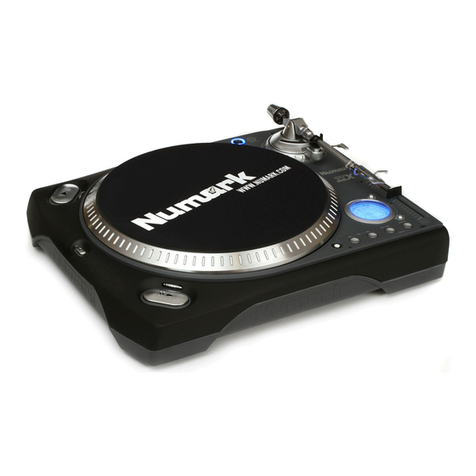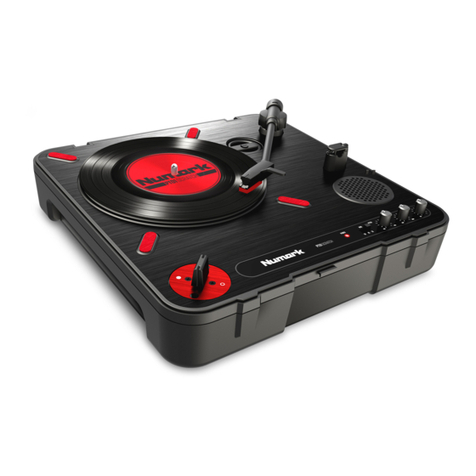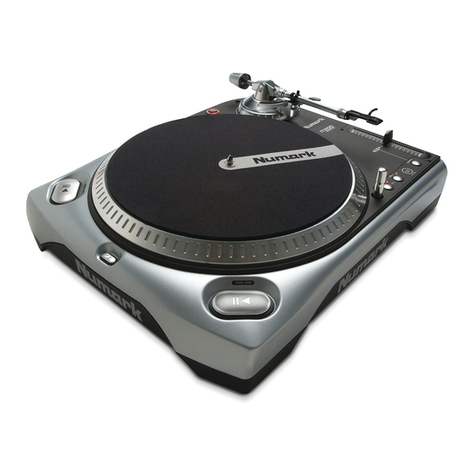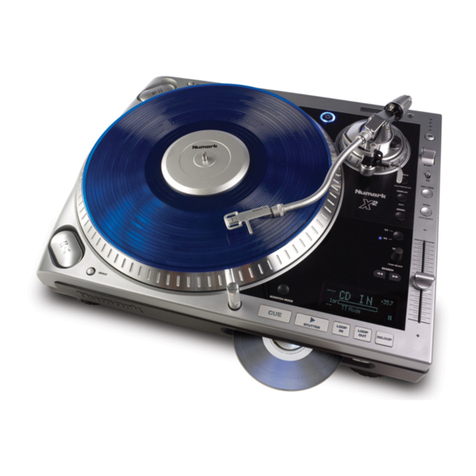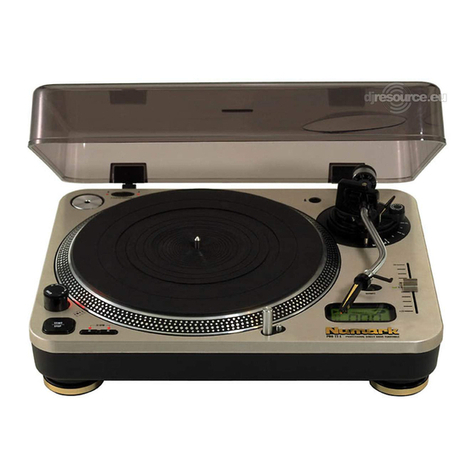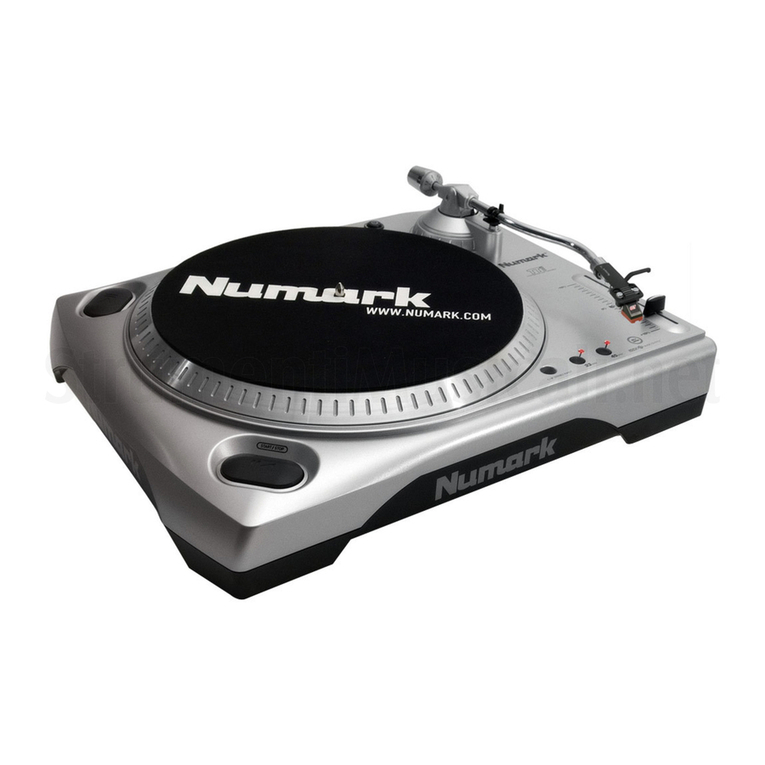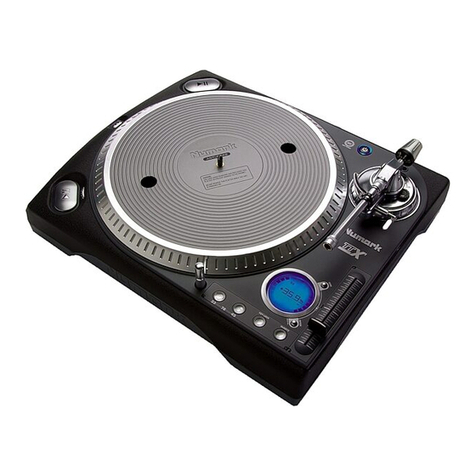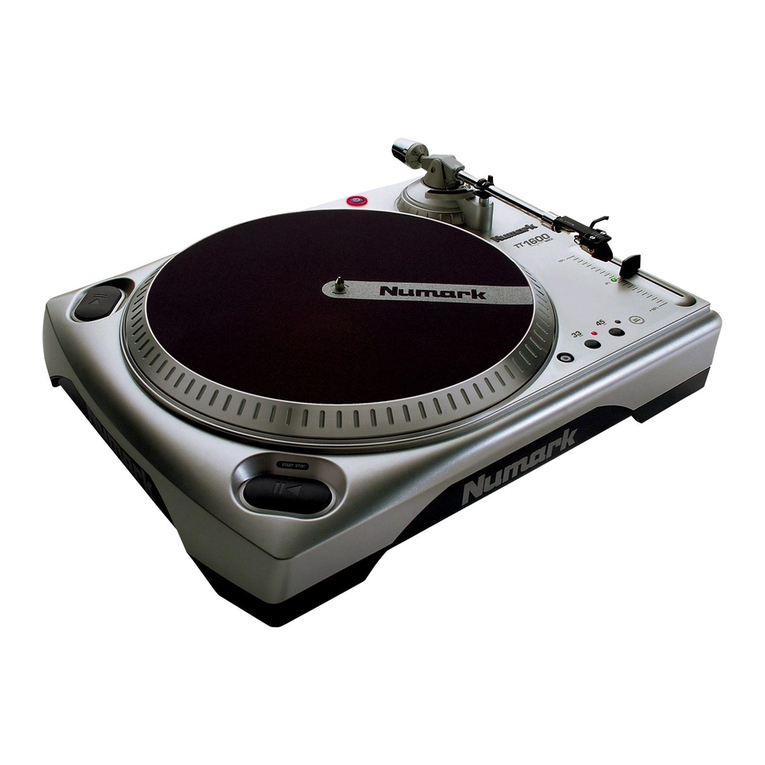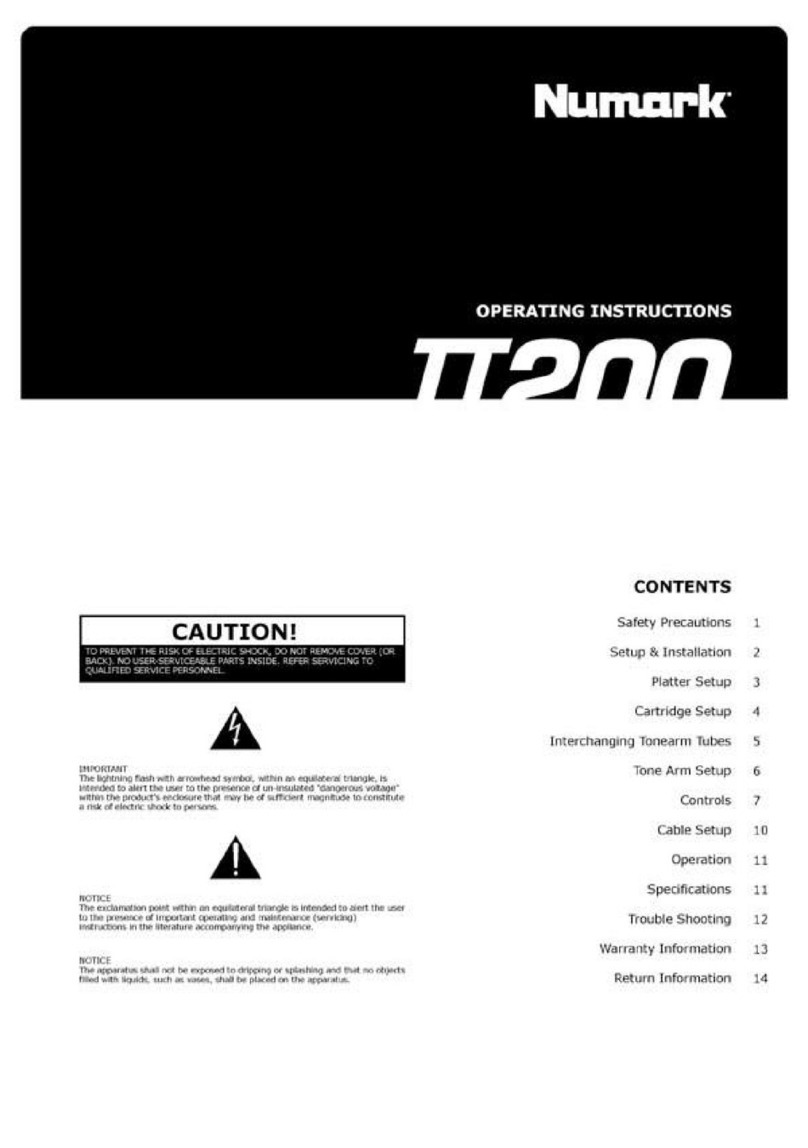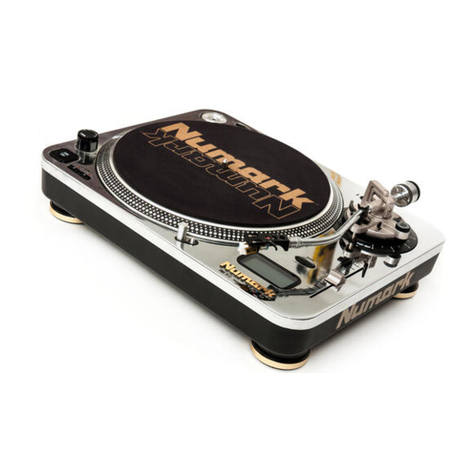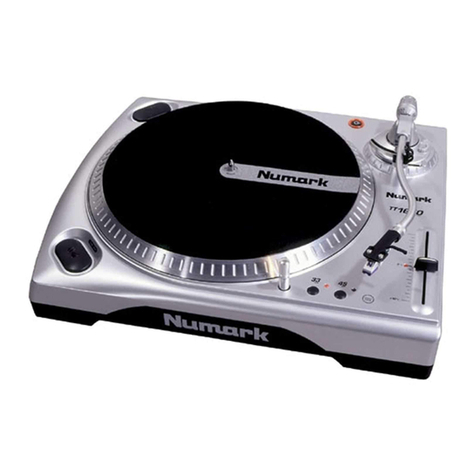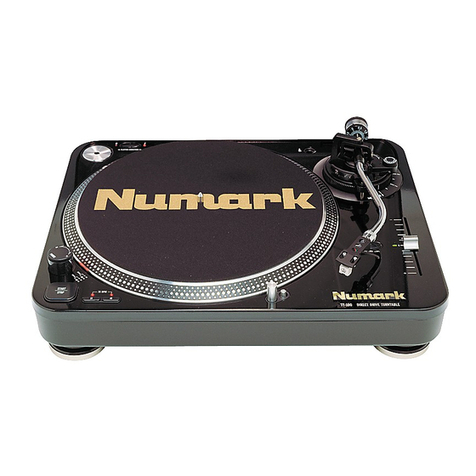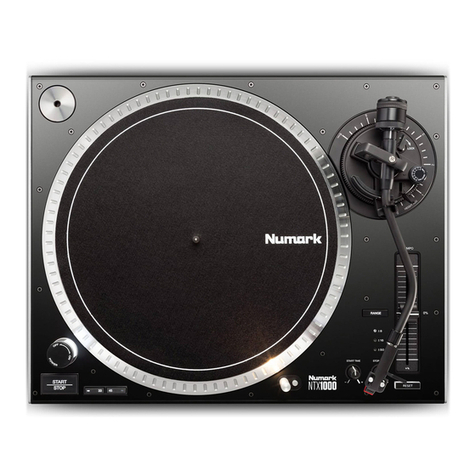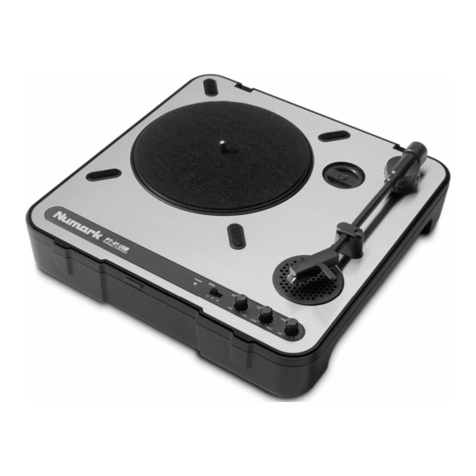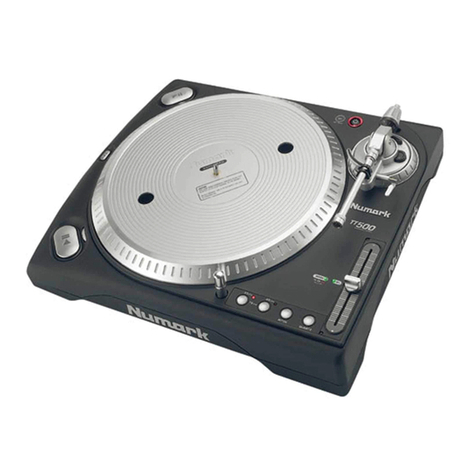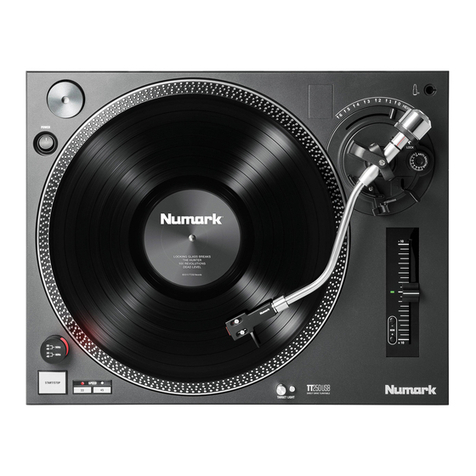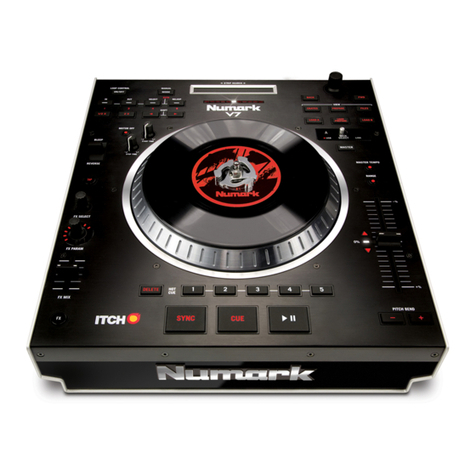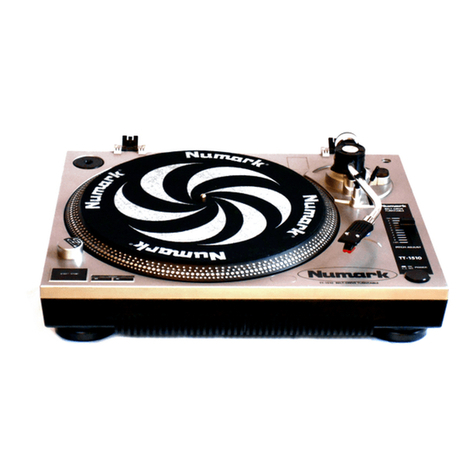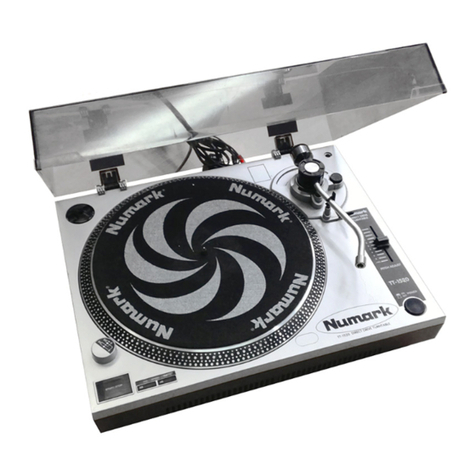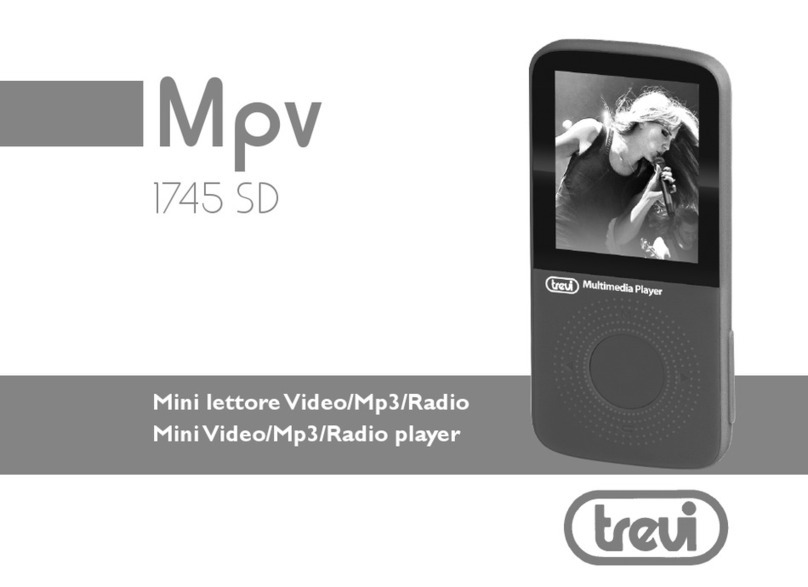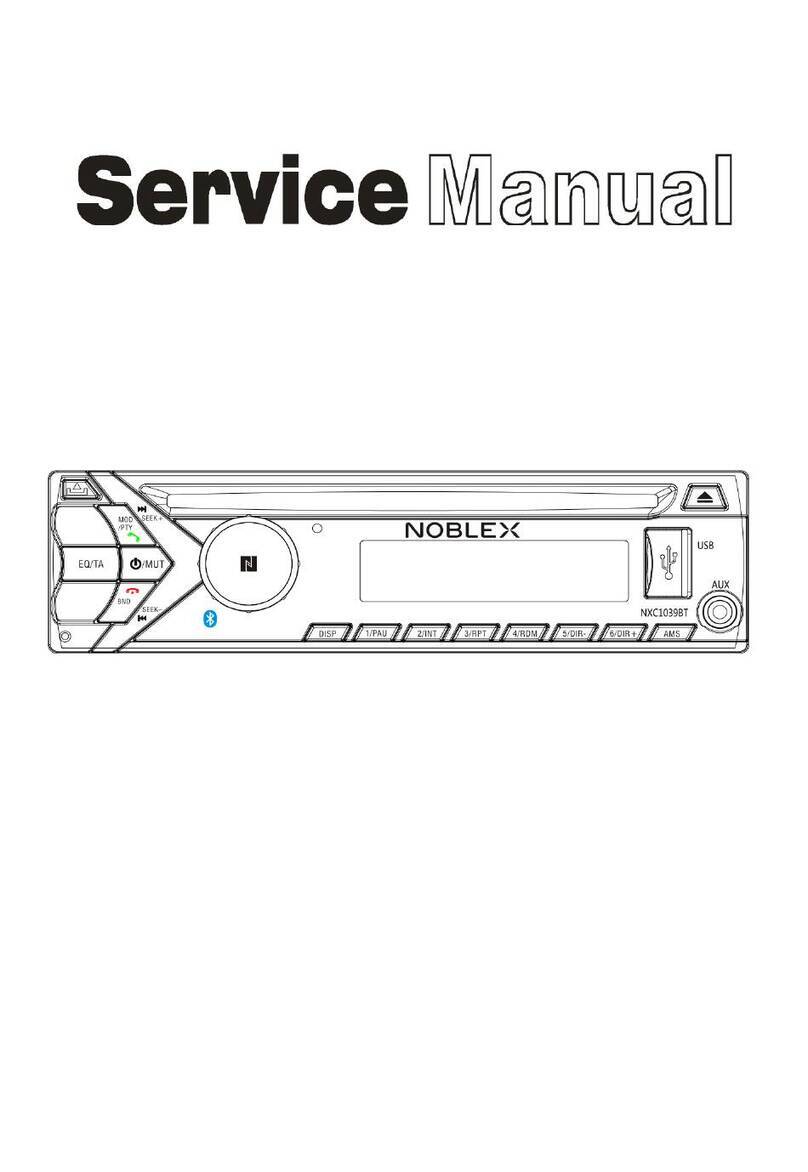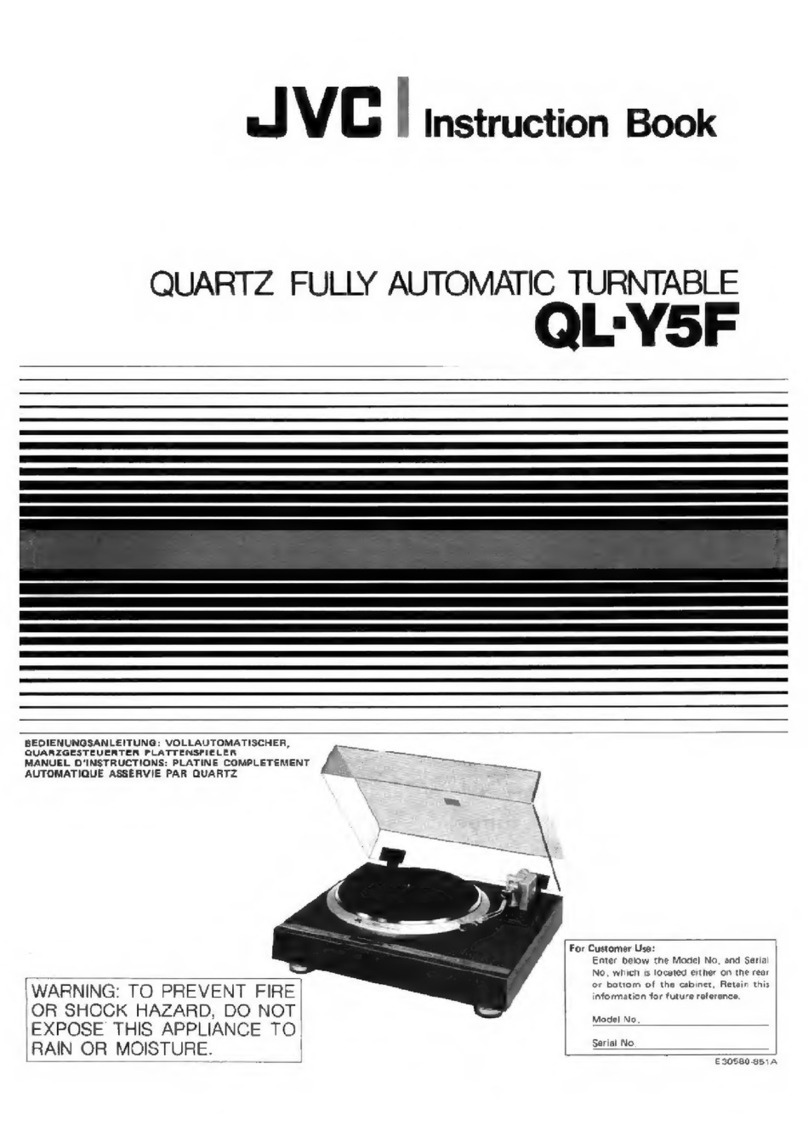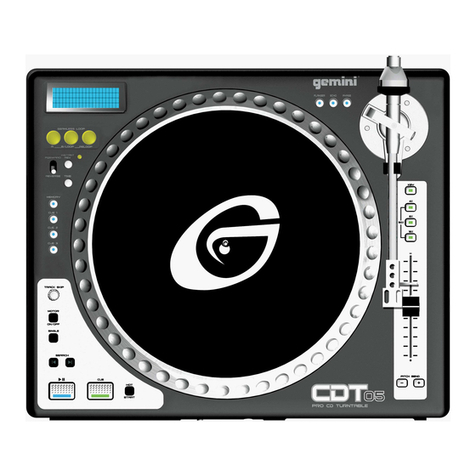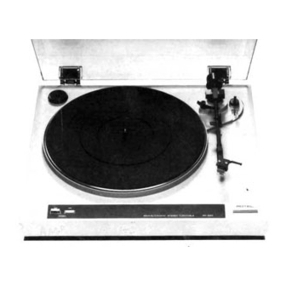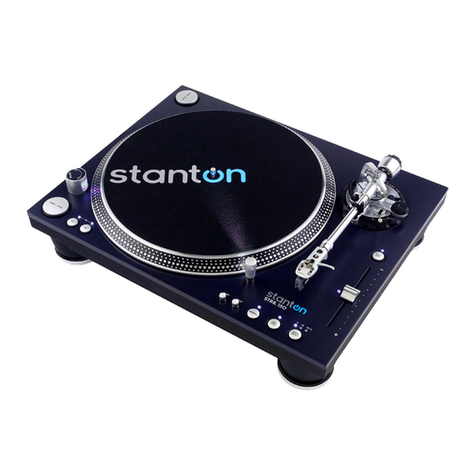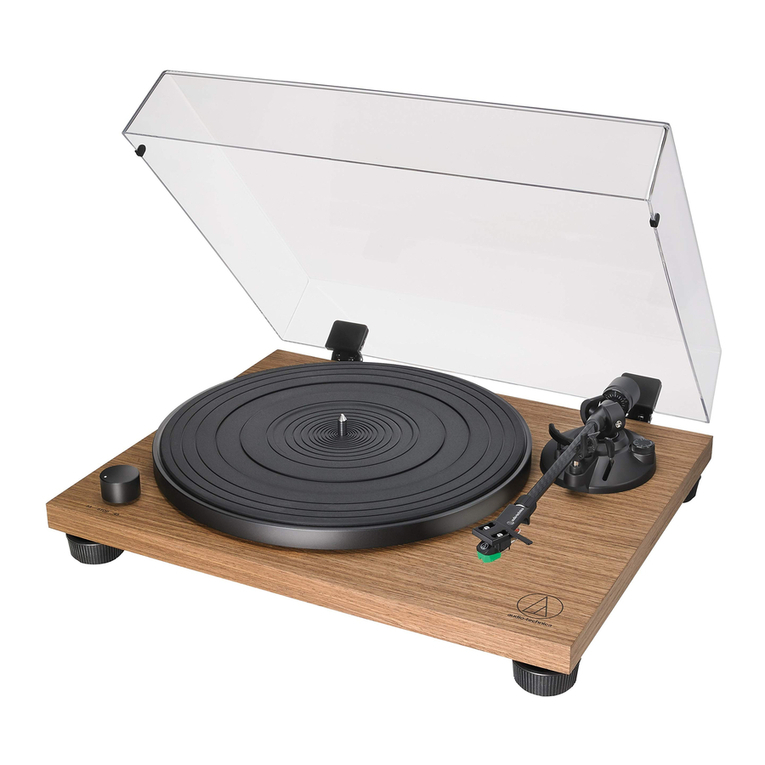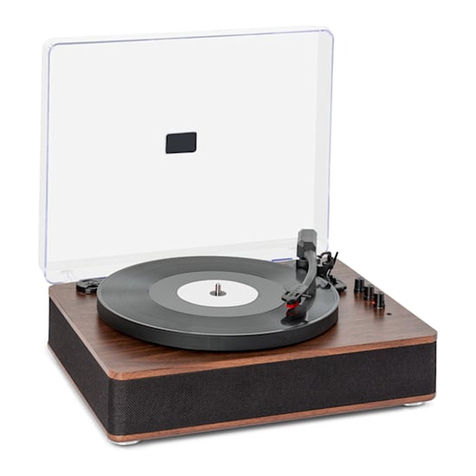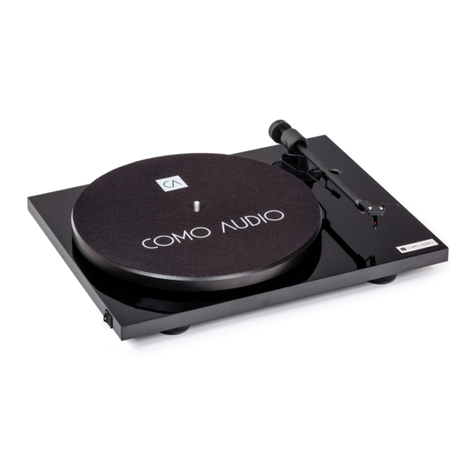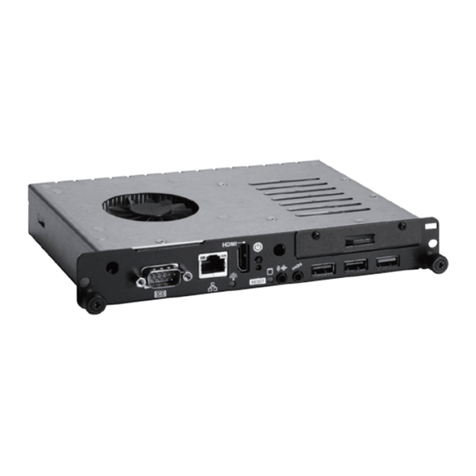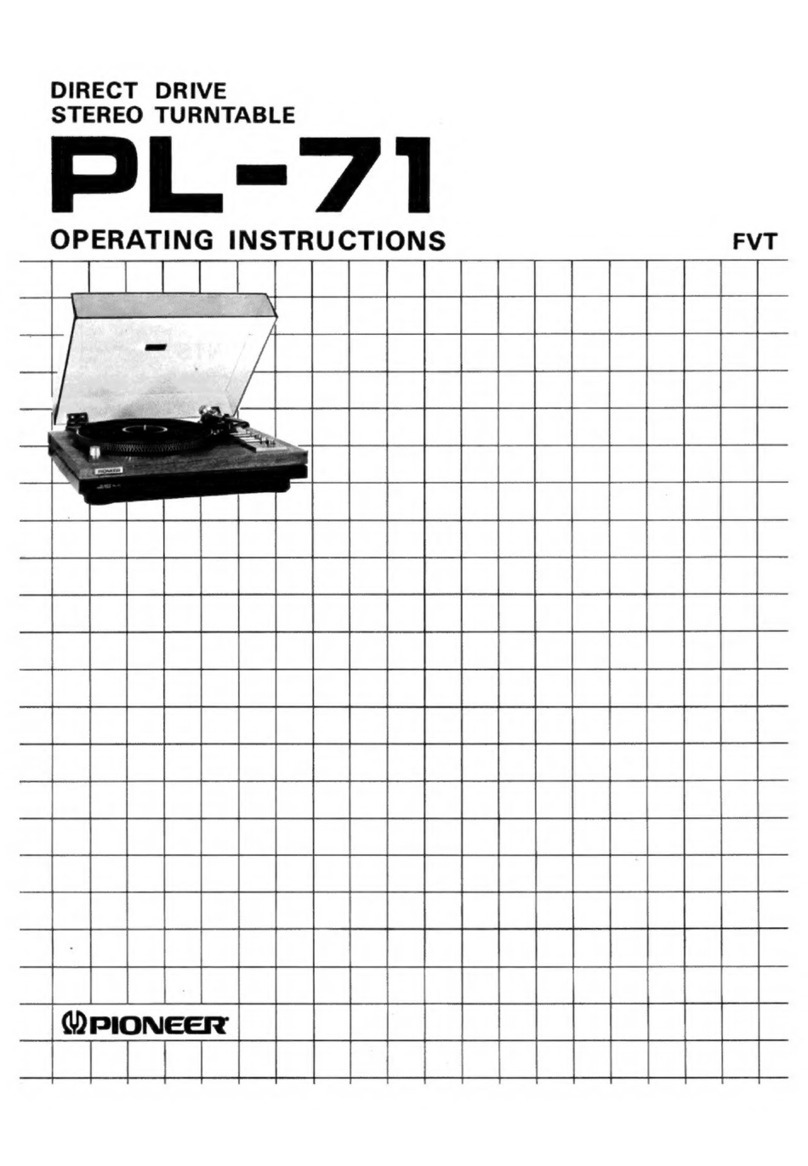(DEUTSCH) KURZANLEITUNG
1. Versichern Sie sich, daß alle im Anfang dieser Anleitung aufgeführten Teile in der Schachtel enthalten sind.
2. LESEN SIE DIE SICHERHEITSBROSCHÜRE BEVOR SIE DAS GERÄT BENUTZEN
3. Um das Produkt zu registrieren, besuchen Sie bitte http://www.numark.com.
ALLGEMEINE BEDIENELEMENTE
1. Stromkabel: Das Stromkabel wird in eine Steckdose gesteckt, NACHDEM alle Tonanschlüsse erfolgt sind.
2. RCA-Tonausgabekabel: Diese Kabel dienen zum Anschluß des Plattenspielers an ein DJ-Mischpult oder
einen Verstärker, welche einen eingebauten PHONO-VORVERSTÄRKER besitzen. Diese Art von RCA-Eingang
kommt bei den meisten DJ-Mischpults vor und ist mit PHONO oder PLATTENSPIELER gekennzeichnet. Falls
die RCA-Tonausgabekabel nicht an ein Mischpult oder Vorverstärker mit PHONO-VORVERSTÄRKER
angeschlossen werden, ist die Tonausgabe sehr leise.
3. Erdungskabel: Dieses Erdungskabel muß an eine am Mischpult oder Verstärker befindliche Metallschraube
oder einem Erdungsanschluß angeschlossen werden. Falls das Erdungskabel nicht fest mit der
Metallschraube oder dem Erdungsanschluß verbunden ist, wird die Tonausgabe ein Summgeräusch
aufweisen.
4. Ein/Ausschaltknopf: Schalten Sie das Gerät mit dieser Taste ein oder aus.
5. Plattenteller: Dieser Aluminium-Plattenteller muß vor Inbetriebnahme mit dem Plattenspieler fest
verbunden sein. Für Einzelheiten zur Installation der Plattenteller lesen Sie bitte die AUFBAUANLEITUNG.
6. Start/Stop-Tasten: Diese Tasten setzen den Plattenteller in Bewegung und halten ihn an. Beide Tasten
haben dieselbe Funktion. Falls diese nicht zu funktionieren scheinen, überprüfen Sie in der Aufbauanleitung,
daß der Plattenteller korrekt installiert ist.
7. 33 und 45 RPM-Tasten: Diese Tasten steuern die Umdrehungsgeschwindigkeit des Plattentellers. Eine rote
Leuchtdiode gibt an, welche Umdrehungsgeschwindigkeit gewählt wurde.
NOTE: Falls der Plattenspieler bei einer Einstellung von 45 RPM ausgeschaltet wurde, geht diese
automatisch auf 33 RPM zurück, wenn wieder eingeschaltet wird.
8. Tonhöhe-Leuchtdiode: Diese Leuchtdiode leuchtet grün auf, wenn der Tonhöhenregler auf 0% steht.
Wenn der Tonhöhenregler von 0 wegbewegt wird, leuchtet die Anzeige in rot auf.
9. Tonhöhenregler: Mit diesem Schieberegler läßt sich die Tonhöhe um 10% erhöhen oder vermindern. In
der mittleren Stellung ist die Tonhöhe bei 0%. Wenn der Regler von der Mitte in Richtung Tonarm bewegt
wird, vermindert sich die Tonhöhe (Plattenteller wird langsamer), wenn vom Tonarm weg bewegt wird,
erhöht sich die Tonhöhe (Plattenteller wird schneller.)
TONARM: Die Teile 10 – 13 sind alle Teile des Tonarms. Für zusätzliche Einzelheiten über diese lesen Sie bitte im
Abschnitt TONARM-AUFBAU nach. Abhängig vom gekauften Modell ist Ihres entweder mit einem geraden oder S-förmigen
Arm ausgerüstet.
10. Gegengewicht und Skalenring: Das Gegengewicht dient dazu, den Tonkopf mit Einsteckmodul so
auszubalancieren, daß der korrekte Tonnadeldruck auf die Schallplatte ausgeübt wird.
11. Anti-Skate-Einstellung: Dieser Drehknopf dient zum Ausgleich von nach innen gerichteten Kräften. Für
weitere Einzelheiten, lesen Sie bitte im Abschnitt TONARM-AUFBAU nach.
12. Arm-Clip: Dieser speziell entworfene Arm-Clip sichert den Tonarm während Pausen und bei Nichtgebrauch.
Der Arm-Clip wurde so entworfen, daß er in der aufrechten Stellung verbleibt wenn unverschlossen.
HINWEIS: Beim Transport des Plattenspielers ist es immer empfehlenswert, das Tonkopfgehäuse zu
entfernen und den Arm-Clip zu verschliessen, um den Tonarm oder den Plattenspieler vor Beschädigung zu
schützen.
13. Tonabnehmersystem und Headshell: Das Tonabnehmersystem ist auf eine Standard-Headshell
vormontiert. Sowohl das Tonabnehmersystem als auch die Nadel kann selbst ausgetauscht werden und ist
kompatibel mit den meisten Standard DJ Systemen. Vor dem ersten Gebrauch entfernen Sie die Plastik
Schutzkappe vom System.
